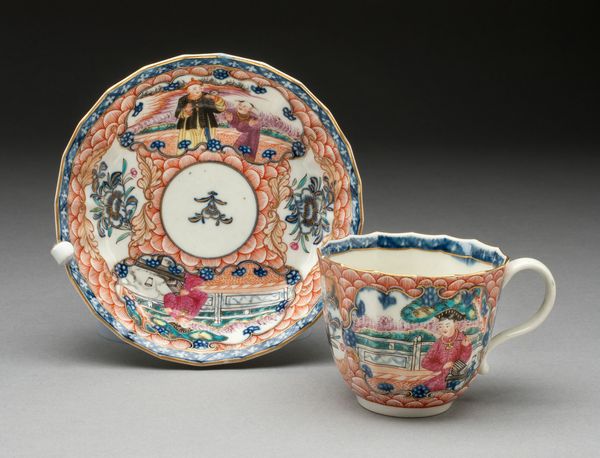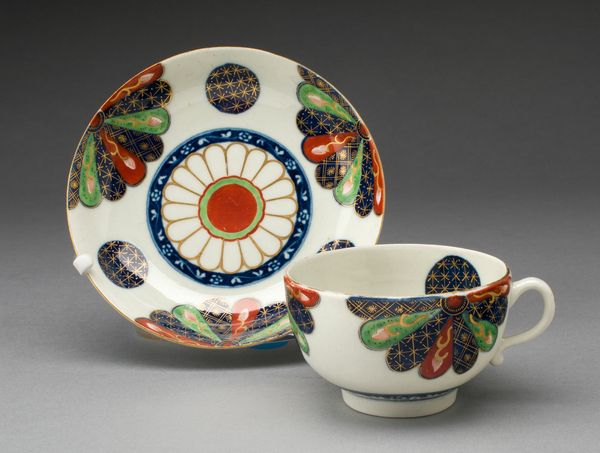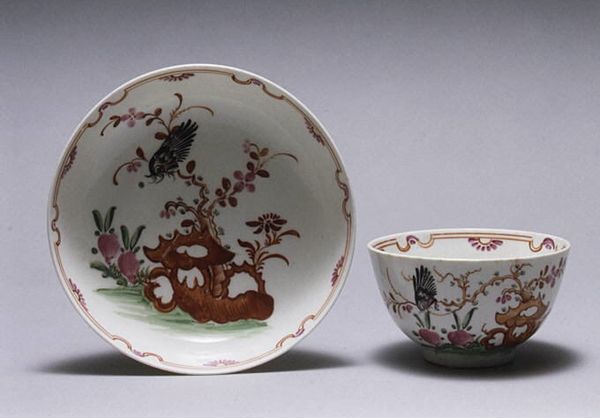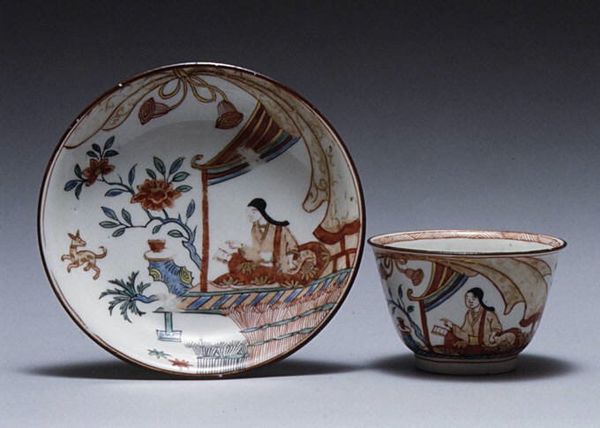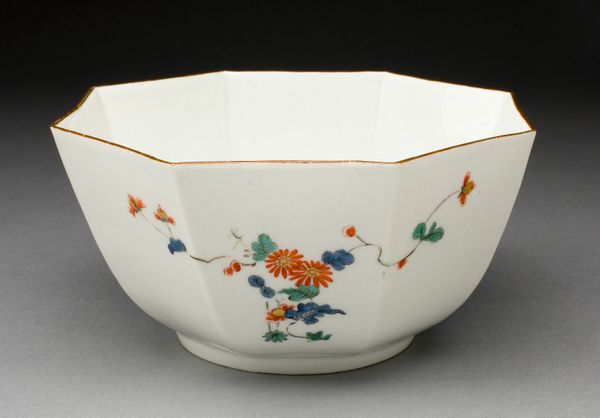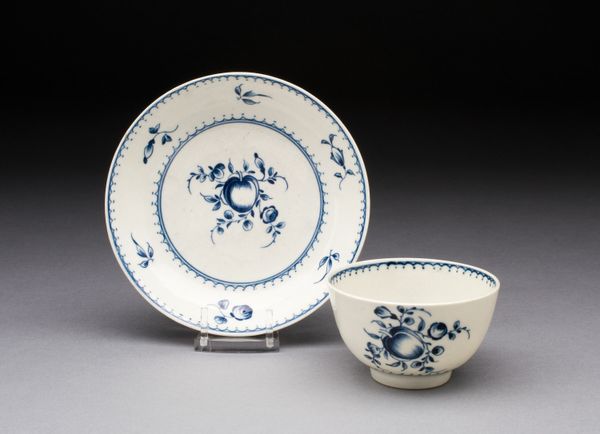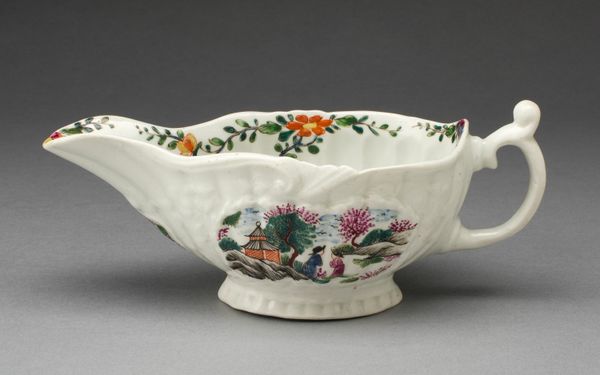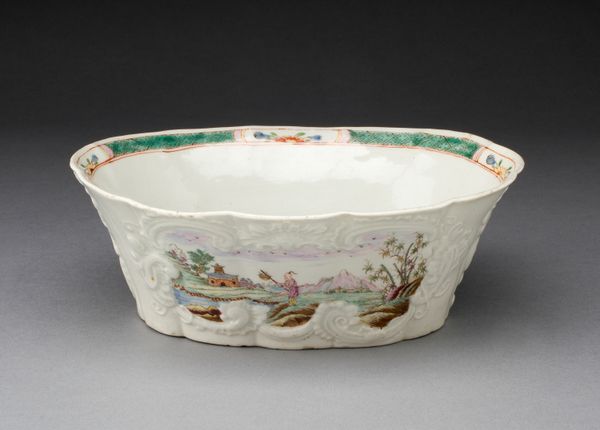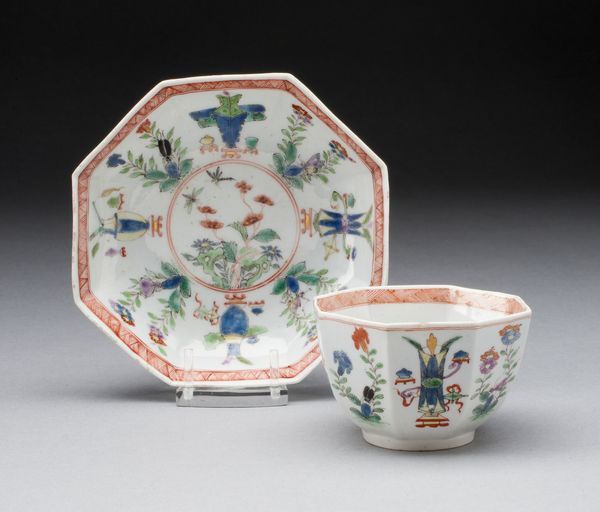
painting, ceramic, earthenware
#
painting
#
ceramic
#
earthenware
#
ceramic
#
nostalgic styling
#
genre-painting
Dimensions: 1 13/16 x 2 15/16 in. (4.6 x 7.46 cm)
Copyright: Public Domain
Editor: We're looking at a pair of earthenware Tea Bowls, created around 1730-1740 by an anonymous artist, now residing at the Minneapolis Institute of Art. They feel… quaint. Almost like looking at a child's drawing. The simple images on the white ceramic have a charming, nostalgic quality. What stories do you see held within these unassuming objects? Curator: I see echoes of cross-cultural exchange, a fascination with the exotic East filtering through European eyes. Consider the rooster—a symbol deeply rooted in European folklore, often linked to vigilance, pride, even aggression. Its presence on a tea bowl, an object associated with tranquility and refinement from Asian traditions, creates a compelling juxtaposition. Does the image alter the rooster's common cultural meaning for you? Editor: I hadn't thought of it that way. I was just thinking that a rooster on a teacup is…unexpected. I can see how it could make us rethink what a rooster represents. Is the imagery a blend of cultures? Curator: Precisely! It is not simply a European rooster but perhaps a whimsical interpretation, filtered through trade routes and colonial encounters. The slightly naive rendering of the bird and the accompanying foliage points towards a craftsman grappling with unfamiliar aesthetics. This humble teacup becomes a canvas of cultural negotiation, preserving collective memory in imagery, don’t you agree? Editor: I see what you mean! It’s like a little capsule of a specific historical moment. It seems simple on the surface, but it's layered with meaning. Curator: Exactly! By tracing the symbols and their mutations, we gain insight into how cultures perceive and reinterpret one another, reminding us of the power of images to transcend and transform. Editor: I never would have guessed that a little teacup could hold so much history! Thanks for helping me see it.
Comments
No comments
Be the first to comment and join the conversation on the ultimate creative platform.
